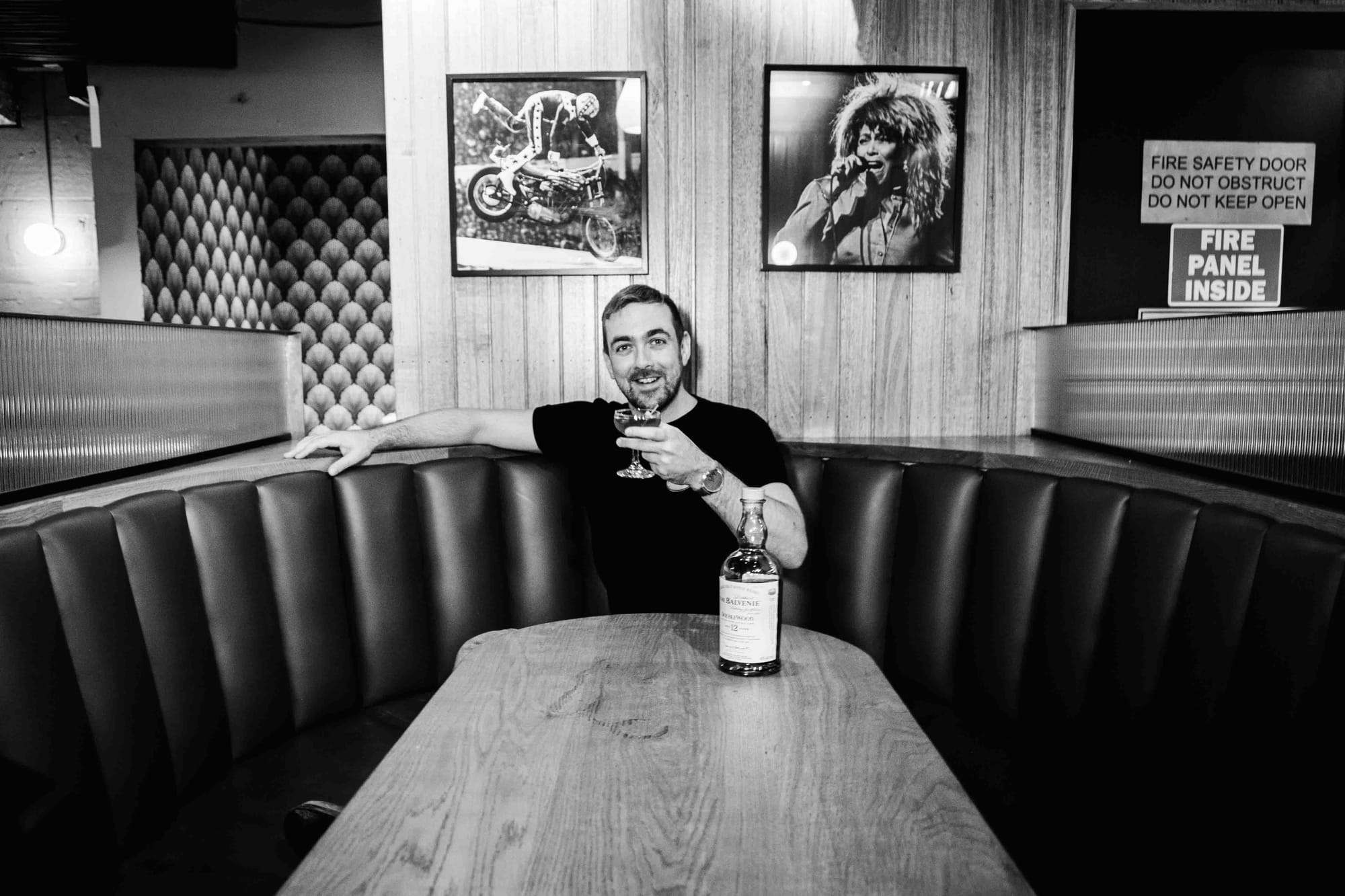Ross Blainey on the power of true collaboration for creativity, and 2024 predictions
Is the era of guest shifts and takeovers done? Have we reached peak vinyl bar?

If the new bar opening boom of late 2023 is anything to go by, 2024 is going to be a very interesting year for the bar and drinks world.
And so for the first episode for Drinks At Work in 2024, I wanted to discuss some of the trends that came out of 2023 and what we might see in the year ahead, and to do that I spoke to the ever thoughtful and creative Ross Blainey.
Ross is the brand ambassador and creative collaborations lead for Glenfiddich and The Balvenie in Australia, and a good friend not just of mine but of the Drinks At Work podcast as well — I first spoke to him for the show back in episode four. In that chat we spoke about how the whisky world works, but for this episode I wanted to explore how it is that Ross goes about collaborations and what that means for creativity in the drinks world.
That’s because it’s in his role as the creative collaborations lead for his brands that I think Ross really opens up what it means to be a whisky brand ambassador. He is someone who enjoys getting to experience the creative process of others — whether that be award-winning and creative chefs like Lennox Hastie from Sydney restaurant, Firedoor, or in fields further away from the whisky world, like fashion, in which he has collaborated with designers and artists like Jordon Gogos and Akira Isogawa. And it’s that love for the creative process that has seen him do some very interesting work and learn a lot along the way.
We also talk a little about the great explosion of new bars in late 2023, and look ahead to what we can expect in 2024. Have we reached peak vinyl listening bar with the 10,000 vinyl records amassed on the shelves at the new Swillhouse venue, Caterpillar Club? What has driven the guest shift and takeover phenomenon, and is it on its last legs?
Give the episode a listen in the player here, and below, I’ve got just a few of the many highlights and takeaways from the chat.
“I’d never done public speaking before I took this job.”
If you’ve had a chance to have a drink with Ross, or better yet, attended a training or talk that he’s hosted, you’ll know he’s a great storyteller. But everyone has to start somewhere, and it was the public speaking aspect that Ross was most nervous about before taking on the ambassador role.
How did he get over that worry? It helped that he knew what he was talking about.
“I’d worked in whisky and around whisky for years and years by that point,” Ross says. “I think there was also maybe an element of, there’s a bit of pride, like your culture, and you get to tell people about Scottish culture with the whisky.”
But he would get very nervous, he says, before having to get up and speak in public.
“I still get nervous before doing public speaking. But that made it a lot easier, because I knew what I was talking about.”
The lesson here? Know what you’re talking about — I think that’s a handy life lesson in general.
“It’s about shared values initially.”
How does Ross go about finding people to collaborate with? It’s not just about doings things that Ross thinks will be fun — although that is a part of it.
“I think when you’re doing these things, if you like it, then other people are gonna like it,” Ross says.
But there’s more to it than that, of course.
“I’m kind of always looking for people, places, brands that are gonna fit with what we do,” says Ross.
“I know what our brands are and what they believe in and what their personality is, so I’m looking out for things or people that have similar traits to that.”
That’s what led to the collaboration between The Balvenie and Lennox Hastie, who has since become an ambassador for the brand.
“I watched Lennox’s Chef’s Table episode. And when I watched that, there’s one part where he has the caviar, which he does on the barbecue and it’s smoked a little bit. And there was a bit of a fuss around that, saying, oh, you can’t do that with caviar. And he was basically going against the grain with that. The attention to detail and everything he was doing, I could just see a relation.
“Originally, I thought it was going to be maybe a Glenffidich thing. And I just reached out to him and I said, I love what you do. Here’s who I work for — can I come down for a chat and have a whiskey with you?
“I realised after talking to him that it was such a perfect fit for The Balvenie because Balvenie is so much about craftsmanship and the pursuit of perfection. [Being] willing to look at the tiniest details, to make the best that you can. It’s not necessarily about everyone else, but it’s your art form — You want to make it better because you feel you can do it better, and you want to keep growing and bettering that all the time.”
“If you say you believe in this thing, you better do that thing.”
Look, there’s a lot of marketing blather out there that really doesn’t make sense to me. When I hear a phrase, like “living the values of the brand” I can’t help but roll my eyes. But I’ll make an exception for when Ross says it, as he did in the podcast. That’s because of what he says after that sentence.
“It’s actually living the values of the brand, which I think is important for all brands,” he says. “If you say you believe in this thing, you better do that thing. If you want people to be part of your brand and part of your community, then you need to do the things you say you believe in as well.”
Which to mea, is really simple advice: do what you say you will do. It’s a valuable quality to possess as a human.
But do all brands need to have “values”? If you’re a small little distillery, do you need to know what your brand values are or can you just make good booze?
“I think so,” Ross says, “because I think people more and more connect with brands through shared values. If you look at the luxury side of things in general, that used to be about it being expensive and made well. It’s a heritage aspect. But more and more, people need to connect with that brand and see things that they agree with or believe in. It creates a connection with that brand.
“The first thing is the liquid. You’ve got a good product, but after that, to get people interested in it, to get people to drink it, you want them having a shared love or something that they feel that they’re connected to in a little way. There’s a reason you connect with it more than just the taste.”
Thanks for listening to Drinks At Work and for reading Boothby. If you like the episode or enjoy the newsletter, please send it on to a friend who might like it, too. And you can let me know what you think about this week’s episode, and who you'd like to hear from on the podcast by replying to this email.
You can listen on Apple Podcasts, Spotify, Amazon Music and on Android.

